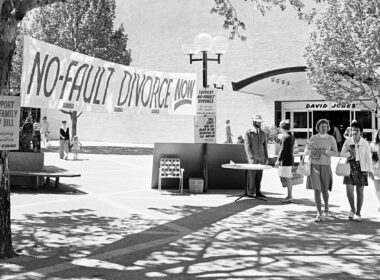From 1 July 2025, the minimum age of criminal responsibility in the ACT increased from 12 to 14 years. The ACT has become the first jurisdiction in Australia to increase the age of criminal responsibility.
Part of the ACT Government ‘early intervention’ approach, children, or young people, who are involved in or at risk of harmful conduct may be referred to a support panel, made up of experts from different disciplines. The support panel can assess referrals and link young people with support services like mental health services, housing, as well as drug and alcohol rehabilitation.
Rehabilitation and support, as opposed to gaol time, forms part of a broader conversation about keeping children out of the criminal justice system and there have been calls from international bodies to raise the age of criminal responsibility in Australia.
According to the Australian Human Rights Commission, in 2019, the Committee on the Rights of the Child had recommended all nations increase the age of criminal responsibility to at least 14. In Australia, only the ACT has legislated to increase the age.
What do the statistics say about children and crime in NSW?
According to the latest NSW Bureau of Crime Statistics and Research figures, from April 2024 to March 2025, 2,735 warnings were issued,10,026 young people were diverted by the Young Offenders Act and 11,261 young people proceeded to court. In March 2025, there were 229 young people in custody.
In the April 2010 to March 2011 period, the number of young people proceeded against by NSW police was 27,050. The figures have been on a downward trend and has largely remained steady since 2019.
James Clifford, Managing Solicitor of the Children’s Criminal Law Practice at the Aboriginal Legal Service NSW/ACT, encounters children with a variety of issues being dragged through the criminal justice system. “We’re seeing a lot of children with intellectual disabilities … children exposed to domestic [and] family violence … children in care. That continues to be an area of real concern for us,” he says.
Clifford says the evidence about the impact of this is clear. “The earlier a child comes into interaction with the criminal justice system, the greater their risk of a lifetime entrenchment in that system.
“I think for us, that’s been the real focus around the urgent, in our view, need to raise the age of criminal responsibility because at the moment, by responding to the criminal justice system, arrests, police cells, custody, bail refusal exacerbates the problem,” he says.
Clifford believes the more a child interacts with the criminal justice system, the more detrimental it can be for them. “It makes kids more entrenched in this kind of identity to say, ‘oh, this is who I am. This is all that I’m good for.’
“And we see that every day a child spends in a police cell … causes lifetime harm to their growth and development,” he says.
Presumption of doli incapax
In NSW, pursuant to section 5 of the Children (Criminal Proceedings) Act 1987, children under the age of 10 cannot commit an offence and this presumption is not rebuttable.
Under the common law, it is presumed that a child between the age of 10 and 14 does not have the requisite knowledge to have criminal intention. Known as the presumption of doli incapax, it is presumed that a child is not capable of committing a crime due to their lack of understanding of the difference between right and wrong. However, this presumption is rebuttable if the prosecution can establish ‘beyond a reasonable doubt’ the child knew what they did was ‘seriously wrong.’
“I think there’s a concern when we look to, for example, outcomes for kids protected by the presumption of doli incapax and say, ‘oh the conviction rate is too low.’
“I think it’s the wrong answer and frankly it’s the wrong question as well. We should be saying, ‘well in most jurisdictions, children under 14 can’t be charged at all,’” he says.
According to Clifford, a legal practitioner will often read the descriptions or details of the person’s offending and it is often easy to forget that “there’s a very young child behind that, who often has huge adversity that they face and then they go into that system,” he says.
He points out that there are places in NSW where the police station is too far away from a youth justice centre, so it is not uncommon for a child to spend the night in a police cell with adults present. He explains that in places like Tamworth, if a child is arrested, they will often spend the night in the police station before they are released the following day and this can happen to children as young as 10, 11, 12 and 13 years old.
Clifford believes that instead of dealing with children through a criminal justice lens, the system should be addressing the underlying factors that put children at risk.
“We come into this adversarial system where those kinds of needs are just not addressed … we pour all this money and resources into police and the courts and lawyers only to leave the child and their family without the support they actually need to address those underlying factors,” he says.
Clifford believes it is often difficult to prove the child had the requisite level of knowledge for the offence. “[T]he reality is that the children in this cohort, who we know often have intellectual disabilities, often have learning disabilities … been isolated from school … been victims of violence themselves, do have a difficulty in understanding the seriousness of the conduct they have been accused of.
[K]ids will make mistakes. It’s about how we respond to them, what trajectory we then set them on.
“It’s no surprise [that] in many ways … children are found to be doli incapax, incapable of forming the mens rea for a criminal offense because they genuinely are too young…,” he says.
In NSW, there are provisions that try to divert children from the criminal justice system. Clifford explains that under the Young Offenders Act, children can receive warnings and cautions which are not recorded on a child’s criminal record. These options do not require a court order and can be given by the police instead.
Whilst this may address some of the issues, there are limitations. In NSW, there are limits to the number of cautions a child can receive. Children are given up to three warnings. “Even if a police officer says, ‘yes, I would want to divert this child into a caution,’ they’re unable to do so as certain offenses are carved out,” he says.
Clifford gives the example of a child threatening to hit someone. The child might get charged with intimidation. Under the Crimes, Domestic and Personal Violence Act, the child is not eligible to be diverted but if the child hits someone and is charged with common assault under the Crimes Act, then the child is eligible for diversion. “So, we’re in these perverse situations where we’re unable to take full advantage of the mechanisms that do exist,” he says.
Another limitation is that diversions often rely on police discretion. “[W]e know that where there is police discretion, often Aboriginal children are disadvantaged,” says Clifford.
Experience of indigenous children in the criminal justice system
Through his work at the Aboriginal Legal Service, Clifford sees a significant over-representation of Aboriginal children. He acknowledges that while the overall number of children in custody has decreased in the last decade, recent changes, such as changes to section 22C of the Bail Act 2013, could reverse the trend. “[F]or these children, there are particular cultural needs that exist when a child is taken off country to a detention centre, that causes enormous harm …,” he says.
In NSW, the Reiby Youth Justice Centre in Campbelltown holds children under the age of 15. Both boys and girls are held at the centre and Clifford says, “it’s a long way if your children and connection are in Moree or Bourke or Walgett and that’s where your community is.”
The experience can be isolating as families may have limited resources to allow for regular visits. Clifford points out that Aboriginal children are often overrepresented in custody, in searches, and the number of times they are stopped on the street. “All of that flows into this ongoing effect of being more and more drawn into this system that is not a safe place for them,” he says.
Clifford explains that punitive responses can often lead to a “lifelong involvement” in the criminal justice system. “[T]hat’s where that kind of intergenerational effect flows through. Family names are recognised, and then their children are recognised, or their siblings are targeted or it’s harder to access that diversion because there might be a sense that they’re not deserving of it,” he says.
Should NSW follow ACT’s example and raise the age of criminal responsibility?
Clifford believes that the age of criminal responsibility in NSW should be increased. He points to overseas jurisdictions like the European Union where most of the nations have increased the age to 14. Many of the overseas jurisdictions provide additional services or support systems. In those jurisdictions, children can get the support they need earlier on. “In countries where we don’t rely on a criminal justice system response for those kids, you’re not having to go through this month’s long criminal justice system response in order to have an outcome. …
“You can have those supports in place straight away and you don’t have to have this really harmful process of arrest and incarceration,” he says.
Australia has come under international pressure to increase the age of criminal responsibility. A review into the operation of doli incapax is currently underway and the report is expected later this year.
Clifford says, “I think the evidence is crystal clear that it should be 14 with no exceptions. The medical evidence is clear about the level of development that children have at that age and the need for those children to receive actual support that addresses their underlying needs, allows them to go to school, have a safe home … to learn from their mistakes …
“[K]ids will make mistakes. It’s about how we respond to them, what trajectory we then set them on.”




